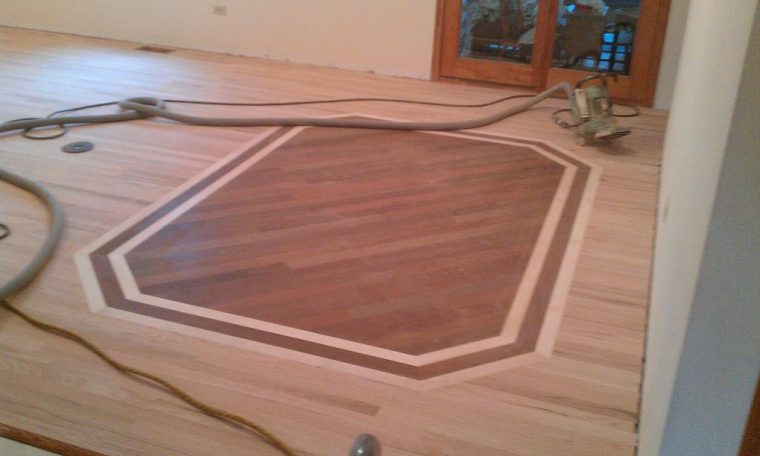
Choosing new flooring can be exciting but also daunting, especially when it comes to budgeting. To help you navigate this process, we’ve compiled a comprehensive guide on determining your budget for new flooring. From understanding the cost factors to setting a realistic budget, we’ll cover everything you need to know to make informed decisions about your flooring investment.
Factors Affecting Cost
When determining how much to spend on new flooring, several factors come into play, including the size of the area, the type of flooring chosen, and any additional installation or labor costs. Other factors to consider include the quality of materials, the complexity of the installation, and any extra features or customization options.
Types of Flooring
There are various types of flooring to choose from, each with its own price range. Hardwood flooring, for example, is a popular choice but tends to be more expensive than laminate or vinyl flooring. Tile flooring is another option that varies in price depending on the material used. Understanding the different types of flooring available can help you make a more informed decision based on your budget and needs.
Hardwood Flooring
Hardwood flooring is a classic choice known for its timeless appeal and durability. Made from natural wood, hardwood floors add warmth and elegance to any room. Common types of hardwood include oak, maple, cherry, and walnut. Hardwood floors are available in solid and engineered forms, each offering unique benefits.
Laminate Flooring
Laminate flooring is a cost-effective alternative to hardwood, offering a similar look without the high price tag. Made from synthetic materials, laminate floors are highly durable and easy to maintain. They come in a variety of styles and colors, mimicking the appearance of wood, tile, or stone.
Vinyl Flooring
Vinyl flooring is a versatile option suitable for high-traffic areas like kitchens and bathrooms. It is available in sheet, tile, or plank form, offering endless design possibilities. Vinyl flooring is water-resistant, making it ideal for areas prone to moisture.
Tile Flooring
Tile flooring, made from materials like ceramic, porcelain, or natural stone, is durable and easy to clean. It is available in a wide range of colors, patterns, and sizes, allowing you to create custom designs. Tile flooring is ideal for areas with heavy foot traffic.
Carpet Flooring
Carpet flooring is known for its softness and warmth, making it ideal for bedrooms and living rooms. It comes in a variety of styles, including plush, Berber, and frieze. Carpet flooring is available in synthetic and natural fibers, each offering unique benefits.
Bamboo Flooring
Bamboo flooring is an eco-friendly option made from renewable bamboo grass. It is durable, sustainable, and resistant to moisture and insects. Bamboo flooring adds a unique, natural look to any room.
Cork Flooring
Cork flooring is made from the bark of cork oak trees and is known for its softness and resilience. It is a sustainable option, as the bark regrows after harvesting. Cork flooring is hypoallergenic and provides excellent insulation.
Concrete Flooring
Concrete flooring offers a modern and industrial look, suitable for contemporary homes. It is durable, easy to maintain, and can be stained or polished to achieve a variety of looks. Concrete flooring is ideal for indoor and outdoor use.
Linoleum Flooring
Linoleum flooring is made from natural materials like linseed oil, wood flour, and cork dust, making it eco-friendly and biodegradable. It is durable, easy to clean, and available in a variety of colors and patterns.
Rubber Flooring
Rubber flooring is a resilient and comfortable option, ideal for gyms, playrooms, and kitchens. It is slip-resistant, shock-absorbent, and easy to clean. Rubber flooring is available in tiles or rolls, offering versatility in design.
Cost Comparison
To get a better idea of how much to budget for new flooring, it’s helpful to compare the costs of different options. While hardwood flooring may have a higher upfront cost, it can add value to your home and may require less maintenance over time compared to other types of flooring. Laminate and vinyl flooring, on the other hand, are more budget-friendly options that can mimic the look of hardwood or tile at a lower cost.
Setting Your Budget
When setting your budget for new flooring, it’s essential to consider both the upfront cost and the long-term value. Determine how much you can afford to spend based on your financial situation and the importance of quality and durability. It’s also helpful to get quotes from multiple flooring companies to compare prices and find the best deal.
Cost-Saving Tips
If you’re looking to save money on new flooring, there are several tips you can follow. Consider installing the flooring yourself if you have the skills and tools required. You can also look for sales or discounts on flooring materials or consider using a more affordable type of flooring, such as laminate or vinyl.
FAQs
How much should you spend on new flooring?
The amount you should spend on new flooring depends on several factors, including the type of flooring you choose, the size of the area, and any additional costs for installation or labor. It’s essential to set a budget based on your financial situation and the quality of flooring you desire.
What is the average cost of flooring per square foot?
The average cost of flooring per square foot varies depending on the type of flooring chosen. Hardwood flooring can cost anywhere from $3 to $12 per square foot, while laminate and vinyl flooring typically range from $1 to $7 per square foot.
Are there ways to save money on new flooring?
Yes, there are several ways to save money on new flooring. You can look for sales or discounts on flooring materials, consider using a more affordable type of flooring, or install the flooring yourself to save on labor costs.
What factors should I consider when budgeting for new flooring?
When budgeting for new flooring, consider factors such as the type of flooring you want, the size of the area, any additional installation or labor costs, and the long-term value of the flooring.
Is it better to invest in high-quality flooring?
Investing in high-quality flooring can be beneficial in the long run, as it can add value to your home and may require less maintenance over time compared to lower-quality options.
How can I determine the right flooring for my budget?
To determine the right flooring for your budget, consider factors such as the upfront cost, long-term value, and the quality and durability. Get quotes from multiple flooring companies to compare prices and find the best deal.
Conclusion
Determining your budget for new flooring is an essential step in the home improvement process. By considering factors such as the type of flooring, the size of the area, and your financial situation, you can make informed decisions that meet your needs and budget. Remember to compare prices, explore cost-saving options, and prioritize quality and durability when selecting your new flooring.



